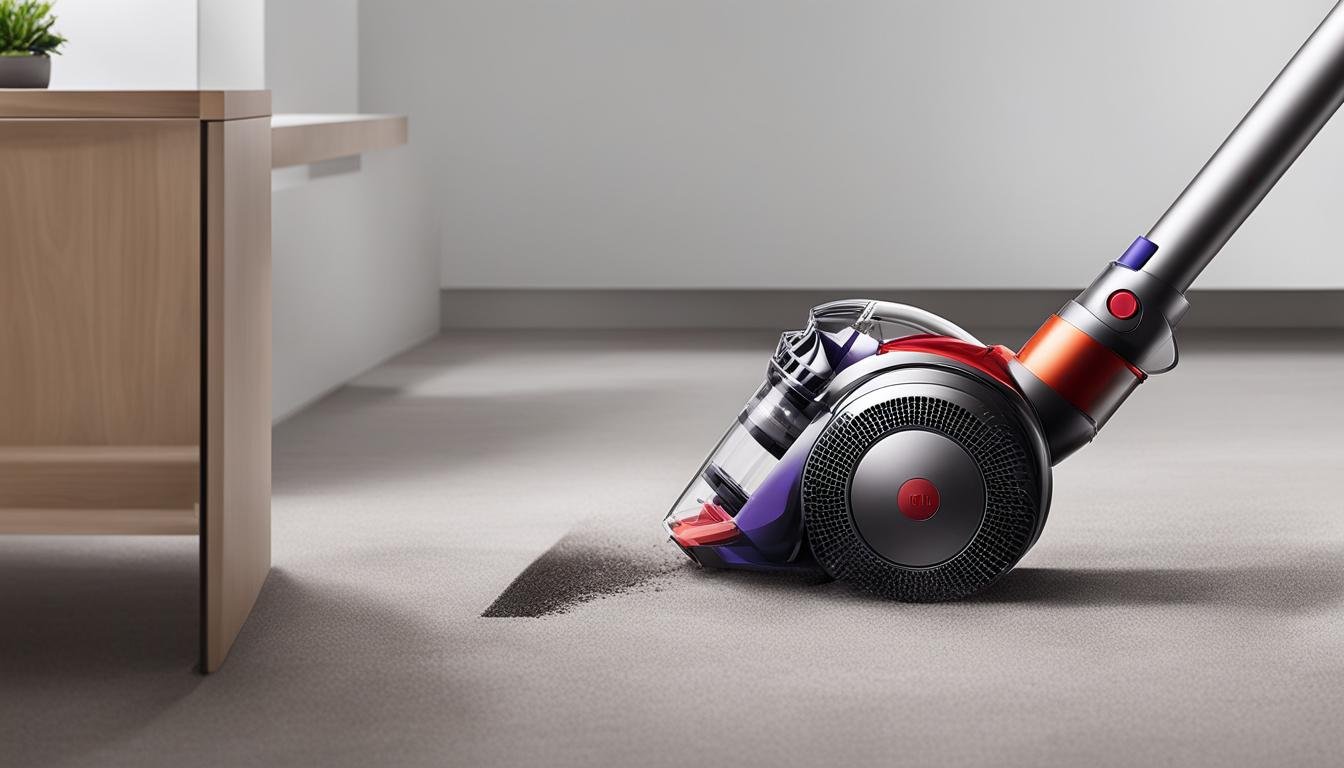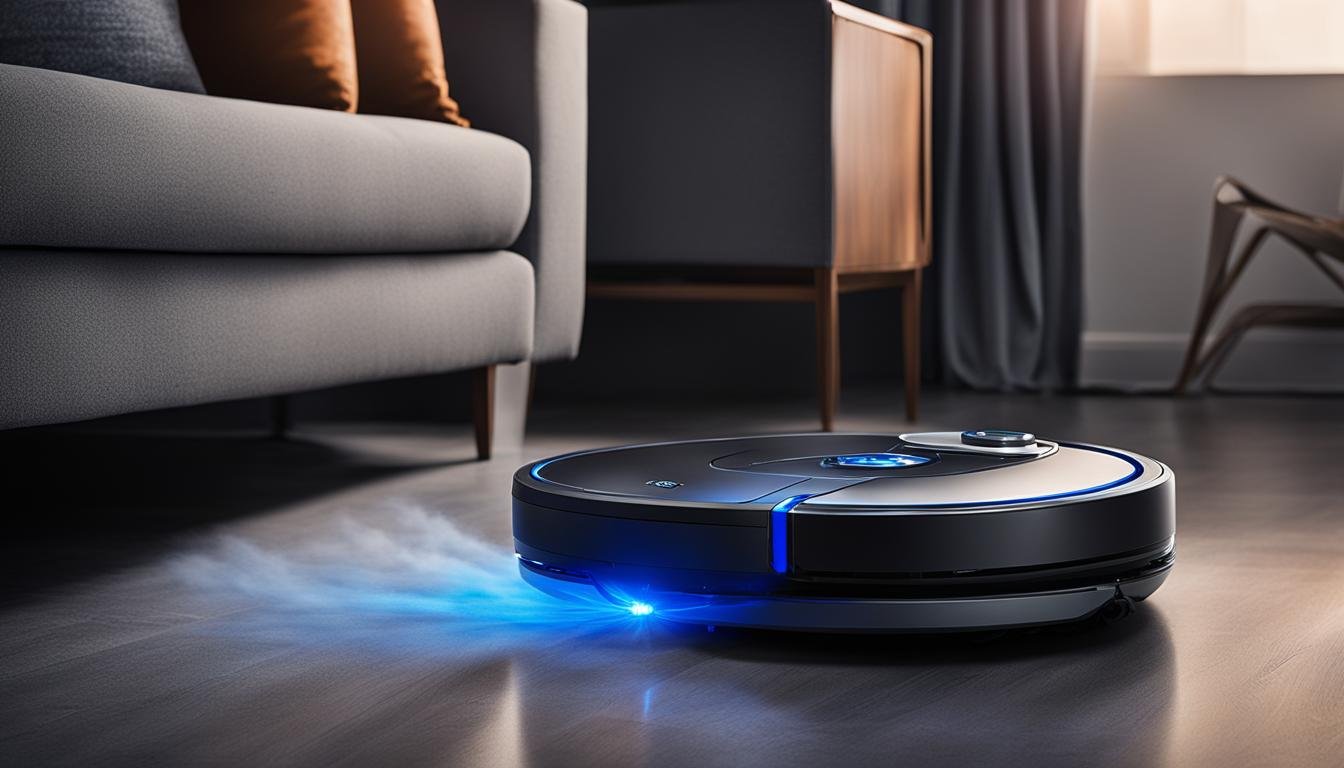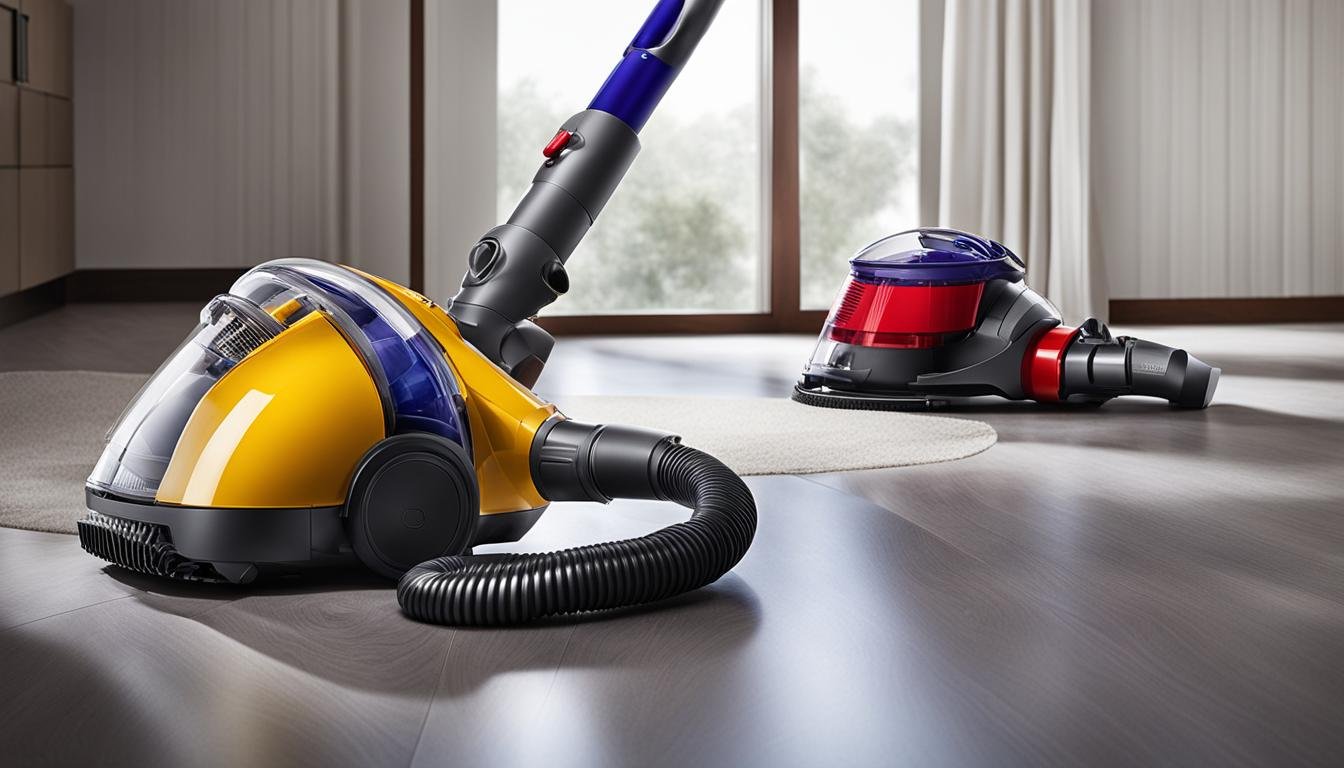Welcome to my beginner’s guide on how to program a Roomba robot vacuum. Programming your Roomba not only enhances its cleaning efficiency but also allows you to unlock its full potential. In this guide, I will walk you through the essentials of Roomba programming, from the necessary components to the different programming modes and techniques.
Before we dive into the world of Roomba programming, let’s first talk about the key components you’ll need. To get started, you’ll require the iRobot Create2, Arduino UNO, and a Bluetooth module HC-06. These components will serve as the foundation for your programming endeavors.
It’s worth noting that Roomba robots are equipped with various sensors such as cliff detectors and bump detectors. These sensors enable intelligent navigation and obstacle avoidance, ensuring that your Roomba operates seamlessly in your home.
Once you have the necessary components set up, you’ll need to familiarize yourself with the three programming modes: Passive Mode, Safe Mode, and Full Mode. Each mode offers different levels of control and safety features, allowing you to tailor the programming experience to your needs.
Establishing a serial connection between the Roomba and the Arduino is crucial for successful programming. Make sure to set the baud rate correctly to establish a secure connection. Once the connection is established, you can start programming your Roomba to perform various tasks such as moving, turning, and controlling the LEDs and display.
Now that we’ve covered the basics, you’re ready to embark on your Roomba programming journey. Whether you’re a beginner or have some programming experience, this guide will equip you with the knowledge and skills to take full advantage of your Roomba’s capabilities. Let’s get started!
Key Takeaways:
- Programming your Roomba robot vacuum can optimize its cleaning efficiency.
- Essential components for Roomba programming include the iRobot Create2, Arduino UNO, and a Bluetooth module HC-06.
- Roomba’s sensors enable intelligent navigation and obstacle avoidance.
- There are three programming modes: Passive Mode, Safe Mode, and Full Mode.
- Establishing a serial connection between the Roomba and Arduino is crucial for successful programming.
Understanding Roomba Commands and Mapping
When it comes to programming a Roomba, understanding its commands and mapping capabilities is essential. In this section, I will explore the tips, tricks, and best practices for Roomba programming, as well as provide coding techniques and examples to help you optimize your Roomba’s performance.
The Roomba robot utilizes a Serial Command Interface (SCI) to receive commands and execute specific actions. These commands are represented by byte arrays and serve various purposes, such as turning the Roomba on or initiating a cleaning session.
“By leveraging the available commands, you can customize the behavior of your Roomba and make it perform tasks tailored to your needs.”
Furthermore, newer Roomba models employ visual simultaneous localization and mapping (vSLAM) technology to map the layout of your house. This process involves the Roomba identifying unique areas as landmarks and creating a smart map imprint.
The smart map can be utilized in numerous ways:
- Create customized cleaning zones based on specific areas of your house.
- Set room-specific schedules for more efficient cleaning.
- Avoid specific areas or objects that may require special attention.
Additionally, advanced features such as hazard recognition enable the Roomba to identify and avoid obstacles and tangle hazards, making the cleaning process safer and more efficient.
Understanding the commands and mapping capabilities of your Roomba opens up a world of possibilities for customization and optimization. By employing the right programming techniques and best practices, you can unlock the full potential of your Roomba and enhance its cleaning performance.
Roomba Programming Tips and Tricks
Here are some valuable tips and tricks to maximize your Roomba’s programming capabilities:
- Utilize specific commands to make your Roomba go straight, turn, and perform other maneuvers required for efficient cleaning.
- Experiment with different combinations of commands to create unique cleaning patterns.
- Take advantage of the Roomba’s sensor data to adjust its behavior based on environmental conditions.
- Implement logic to avoid obstacles and navigate complex areas effortlessly.
- Regularly update your Roomba’s software to ensure it has the latest features and enhancements.
By following these tips, you can enhance your Roomba’s cleaning performance and make the most out of its programming capabilities.
Next, we will delve deeper into the best coding techniques for programming your Roomba. Stay tuned for practical examples and insights!
Making the Most of Roomba Smart Mapping
Once you have created a detailed map of your home using Roomba’s smart mapping feature, you can unlock a whole new level of convenience and control. The iRobot smart mapping technology allows you to optimize your cleaning routine to suit your specific needs. Here are some tips on how to make the most of this powerful feature:
Create No-Go Zones: With Roomba’s smart map, you can designate specific areas or objects as no-go zones. This ensures that the Roomba avoids these areas, keeping them off-limits during cleaning. Whether it’s fragile furniture or children’s play areas, you have the flexibility to define where your Roomba should not venture.
Target Cleaning Zones: High-traffic areas often require more frequent cleaning. With the smart map, you can create cleaning zones to focus the Roomba’s attention on these specific areas. This allows you to keep high-traffic zones consistently clean without the need for manual intervention.
Set Room-Specific Schedules: Do you have rooms that require different cleaning schedules? Roomba’s smart map lets you set room-specific schedules, so you can customize the cleaning routine according to your preferences. Whether it’s the kitchen that needs a daily sweep or the guest room that only requires cleaning once a week, you can have full control over when each room gets its turn.
Customize and Adapt: The smart map feature offers even more customization options. You can assign nicknames to rooms, making it easier to identify and select specific areas for cleaning. You can also change the viewing orientation of the map on your smartphone, ensuring a seamless and intuitive experience. And if your Roomba encounters any obstacles or hazards during cleaning, the obstacle image review feature allows you to identify and handle them efficiently.
Roomba’s smart mapping feature empowers you to take charge of your cleaning routine like never before. From creating no-go zones to setting room-specific schedules, you have the flexibility to tailor the cleaning process to your unique needs. Discover the full potential of your Roomba and enjoy a cleaner and more convenient home.
FAQ
How do I get started with programming a Roomba?
To program a Roomba, you will need essential components like the iRobot Create2, Arduino UNO, and a Bluetooth module HC-06. The Roomba has various sensors for intelligent navigation and obstacle avoidance. There are three programming modes available: Passive Mode, Safe Mode, and Full Mode.
How can I establish a serial connection between the Roomba and Arduino?
To establish a serial connection, the baud rate needs to be set correctly. Once the connection is established, you can start programming the Roomba to perform various tasks like moving, turning, and controlling LEDs and display.
What is the Serial Command Interface (SCI) used by the Roomba?
The Roomba utilizes the SCI to receive commands and perform specific actions. Commands are represented by byte arrays, and each command serves a particular purpose, such as turning the Roomba on or initiating cleaning.
Can the Roomba create a map of my house?
Yes, newer Roomba models utilize visual simultaneous localization and mapping (vSLAM) technology to map the house’s layout. This map can be used to create customized cleaning zones, set room-specific schedules, and avoid specific areas.
How can I customize the Roomba’s cleaning routine with smart mapping?
With smart mapping, you can create no-go zones, cleaning zones, set room-specific schedules, assign nicknames to rooms, change viewing orientation, and use obstacle image review to identify and handle obstacles or hazards during cleaning.






Leave a Reply